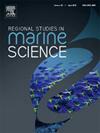利用深度学习加强海洋环境中微塑料的检测和分类
IF 2.1
4区 环境科学与生态学
Q3 ECOLOGY
引用次数: 0
摘要
微塑料(MPs)因其累积和对生态的影响而对环境构成日益严重的威胁。本研究旨在克服传统方法耗费人力且容易出错的局限性,从而更有效地检测微塑料并对其进行分类,以防止海洋污染。我们对物体检测和分类算法进行了评估:YOLOv8x、YOLOv8x(带增强功能)、YOLOv8m、YOLOv8m(带增强功能)、YOLO-NAS-L 和 YOLO-NAS-L(带增强功能),重点关注四种 MP 形态:纤维、薄膜、碎片和颗粒。数据集分为 80% 用于训练(320 幅图像)、20% 用于验证(80 幅图像)和固定的 200 幅测试集。使用旋转(+25° 和 -25°)、调整大小(640 × 640 像素)、缩放、自动定向条带、翻转和噪点应用对图像进行增强。这样就将训练集扩大了 300%,总共有 1400 张图像。在所有类别中,YOLOv8 模型,尤其是增强模型,在[email protected]和精确度方面都优于 YOLO-NAS-L 模型。值得注意的是,YOLOv8x 在精确度和 [email protected] 方面都达到了 99.0% 的优异成绩,每张图像的推理时间仅为 1.2 毫秒,令人印象深刻。增强功能的实施大大提高了各种模型的检测精度。通过增强,YOLOv8x、YOLOv8m 和 YOLO-NAS-L 的精确度始终超过 99%。在实时应用中,YOLOv8x 被选中用于检测和分类 MP 的网络应用,与传统方法相比,它提供了更准确、更高效的解决方案。该模型为研究人员进行 MP 分析提供了宝贵的资源,提高了环境监测的准确性和可靠性。本文章由计算机程序翻译,如有差异,请以英文原文为准。
Enhanced detection and classification of microplastics in marine environments using deep learning
Microplastics (MPs) pose a growing environmental threat due to their accumulation and ecological impact. This study aimed to overcome the limitations of traditional methods, which are labor-intensive and prone to errors, in order to detect and classify MPs more effectively against marine pollution. We assessed object detection and classification algorithms: YOLOv8x, YOLOv8x (with augmentation), YOLOv8m, YOLOv8m (with augmentation), YOLO-NAS-L, and YOLO-NAS-L (with augmentation), focusing on four MP morphologies: fiber, film, fragment, and pellet. The dataset was divided into 80 % for training (320 images), 20 % for validation (80 images), and a fixed testing set of 200 images. The images were augmented using rotation (+25° and −25°), resizing (640 × 640 pixels), zooming, auto-orient strips, flipping, and noise application. This expanded the training set by 300 %, resulting in a total of 1400 images. The YOLOv8 models, particularly when augmented, outperformed the YOLO-NAS-L models in both [email protected] and precision across all categories. Notably, YOLOv8x achieved an exceptional 99.0 % in both precision and [email protected], with an impressive inference time of only 1.2 ms per image. The implementation of augmentation significantly enhanced detection accuracy across various models. With augmentation, YOLOv8x, YOLOv8m, and YOLO-NAS-L consistently achieved precision levels exceeding 99 %. For real-time applications, YOLOv8x was selected for the web application designed to detect and classify MPs, providing a more accurate and efficient solution compared to conventional methods. This model serves as a valuable resource for researchers in MP analysis, improving accuracy and reliability in environmental monitoring.
求助全文
通过发布文献求助,成功后即可免费获取论文全文。
去求助
来源期刊

Regional Studies in Marine Science
Agricultural and Biological Sciences-Ecology, Evolution, Behavior and Systematics
CiteScore
3.90
自引率
4.80%
发文量
336
审稿时长
69 days
期刊介绍:
REGIONAL STUDIES IN MARINE SCIENCE will publish scientifically sound papers on regional aspects of maritime and marine resources in estuaries, coastal zones, continental shelf, the seas and oceans.
 求助内容:
求助内容: 应助结果提醒方式:
应助结果提醒方式:


